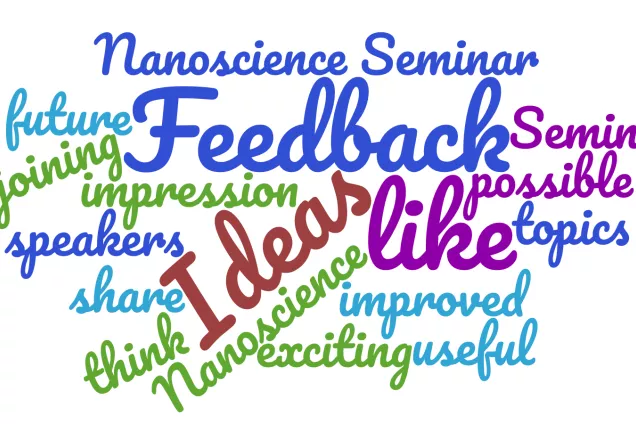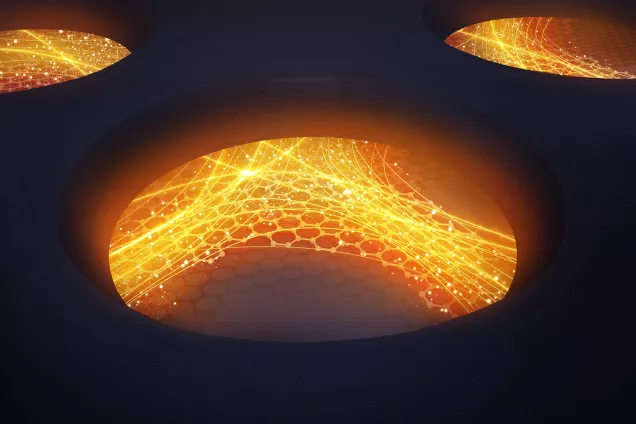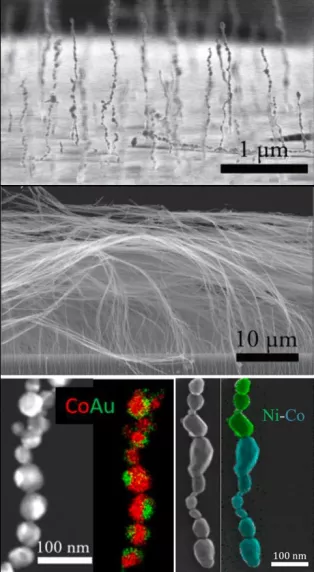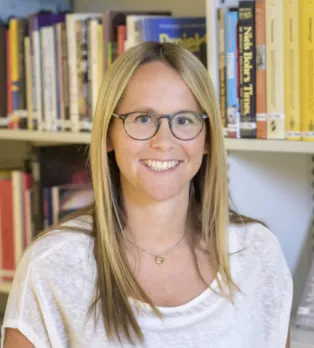The GCN Seminar - Maria Messing: Talk abstract and short bio
Maria Messing, associate professor in Materials Physics and Deputy Director of the Swedish Strategic Research Area NanoLund, presented her research about smart nanomaterials with designed properties based on nanoparticles. In her talk, Maria demonstrated some of the possibilities with aerosol-based nanotechnology. She showed how spark ablation can be used to produce nanoparticles with fully precise and tailored size, morphology and chemical composition
This seminar was given in the frame of a series is organized by the three nanoscience hubs located in the Copenhagen-Lund area. The aim is to to increase awareness about our mutual capabilities and to inspire collaborations.
24th September 2021: Maria Messing (NanoLund): Designing Nanoparticle-based Materials: From Sparks to Multifunctional Materials
Abstract
Smart nanomaterials with designed properties based on nanoparticles have the potential to revolutionize applications in, for example, magnetics and catalysis. But implementing nanoparticles’ potential for such applications requires realizing and understanding nanoparticles with controllable size, morphology, crystal structure and chemical composition on a large scale, at low costs and in a safe and environmentally friendly way.
Spark ablation is a method with high potential to fulfill the above declared requirements, especially for the production of pure metal and compound particles [1]. In this talk I aim to demonstrate some of the possibilities with aerosol-based nanotechnology. I will show how spark ablation can be used to produce nanoparticles with fully precise and tailored size, morphology and chemical composition [2, 3], and their controlled self-assembly into larger structures [4]. I will then show a few examples of the possible use of these particles in magnetic and catalytic applications.
[1] A. Schmidt Ott, Spark Ablation: Building Blocks for Nanotechnology, Jenny Stanford Publishing, New York (2019).
[2] C. Preger, C. Bulbucan, B. O. Meuller, L. Ludvigsson, A. Kostanyan, M. Muntwiler,
K. Deppert, R. Westerström, M. E. Messing: Controlled oxidation and self-passivation of bimetallic magnetic FeCr and FeMn aerosol nanoparticles, J. Phys. Chem. C, 123 (2019), 16083.
[3] S. M. Franzén, M. Tasić, C. B. M. Poulie, M. H. Magnusson, D. Strand, M. E. Messing: Stability of supported aerosol-generated nanoparticles in liquid media, Sci. Rep. 11 (2021), 9276.
[4] C. Preger, M. Josefsson, R. Westerström, M. E. Messing: Bottom-up field-directed self-assembly of magnetic nanoparticles into ordered nano and macro structures, Nanotechnol., 32 (2021), 195603.
Short Bio: Maria E Messing, Associate Professor, Lund University and Deputy Director NanoLund
Maria Messing is an associate professor in Materials Physics and Deputy Director of the Swedish Strategic Research Area NanoLund. She received her Ph.D. in 2011 from Lund University and is leading the research group engineered nanoparticles at the division of solid state physics in Lund. Marias research interest centers on developing of new types of nanoparticle-based materials with designed properties in a safe and sustainable manner using aerosol technology.

Feedback form
Please share with us your impression and ideas, since we would like to make it as useful and exciting as possible!
By combining highly controlled building blocks from very different material systems to realize advanced, functional systems, we aim to jointly address challenges that are out of reach for an individual center.

A cluster of groups at DTU involved in nanoscience
Groups at DTU involved in nanoscience are affiliated to the following departments:



